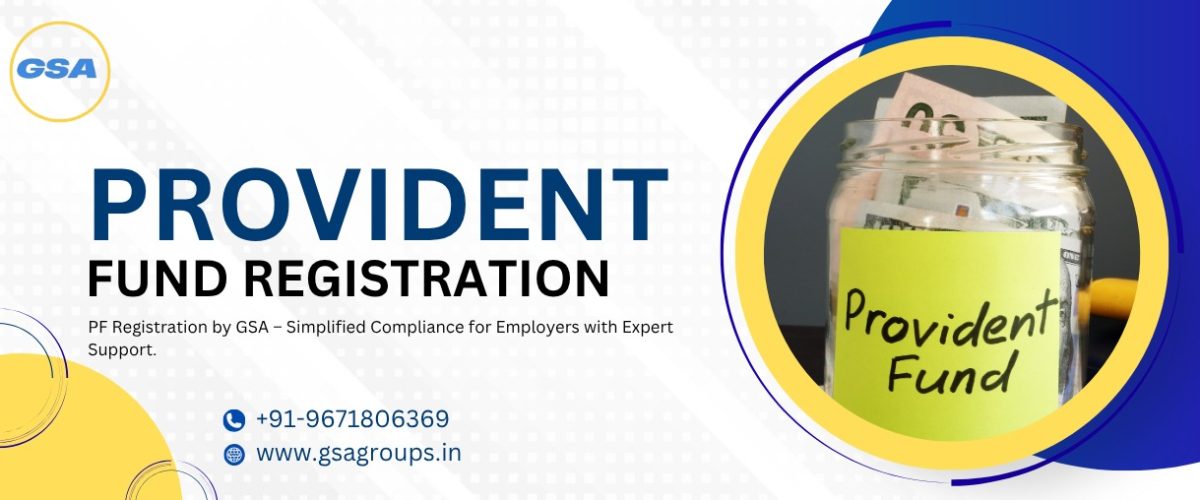
Gsagroups provides expert support with PF registration and compliance management. According to the Employees’ Provident Funds and General Provisions Act of 1952, firms with 20 or more employees must register for PF. It is a social security program designed to provide financial stability to employees after retirement. Both the employer and the employee contribute 12% of the employee’s base salary + the expense allowance to the PF account. The accumulated amount, including interest, can be taken at your retirement age, resignation, or under certain conditions.
Employees who register with PF receive retirement benefits such as a pension and insurance coverage. It also offers tax advantages under Section 80C of the Income Tax Act. Employers who fail to register or contribute face penalties and legal procedures. gsagroups.in
PF (Provident Fund) registration is the process by which employers enroll their businesses in the Employees’ Provident Fund (EPF) program. It is required for firms with 20 or more employees. The program provides stability in finances by forcing both the employer and the employee to contribute a certain proportion of the employee’s salary, which grows in a retirement fund.
Benefits of PF Registrations: Employees accumulate a sizable retirement fund, assuring financial security after retirement.
- Tax Advantages: PF payments are eligible for tax deductions under Section 80C of the Income Tax Act.
- Social Security: Offers financial security during unemployment, disability, or death, with the option for the nominee to receive payments.
- Employees withdraw funds: from their PF to cover medical emergencies, home purchases, or school expenses.
- Interest Earnings: The PF account earns interest (now between 8 and 9%), providing a safe and consistent return.
- Employee Retention: Offering PF benefits increases employee satisfaction and retention, hence making the organization more appealing.
Main purpose of the PF Registration:
1. Retirement Savings: The Employee Provident Fund (EPF) is a long-term savings plan that helps employees to build their nest eggs for their post-retirement years. Both employers and employees contribute a percentage of their salary to this fund.
2. Financial Security for Emergencies: Employees can withdraw money from their PF accounts for situations such as medical expenses, schooling, marriage, or home loan repayment. It provides financial security in times of need.
3. Insurance and Pension Benefits: PF registration also includes EDLI (Employee Deposit-Linked Insurance), which provides life insurance coverage. It also contains the Employee Pension Scheme (EPS), which provides pension benefits after retirement.
4. Legal Compliance: Employees’ Provident Fund and Other Provisions Act, 1952 requires enterprises with 20 or more employees to register for PF. It enforces labor laws and defends employee rights.
5. Tax benefits: Both employer and employee payments to PF are tax-exempt under Section 80C of the Income Tax Act.
Interest on PF balances is tax-free up to a specified amount.
6. Employee Retention & Welfare: PF provides a sense of security and bonuses, which assists businesses in retaining talent and increasing employee morale. gsagroups.in
Who can Register the PF Registration?
1. Employer Registration:
Who may set up PF for the organization?
- Business Owner / Proprietor: For alone proprietorships.
- Authorized Signatory: For businesses (partnerships, LLPs, or private/public limited companies), the authorized signatory (e.g., director, partner, or HR manager) may register on behalf of the organization.
- HR or Payroll Manager: In larger firms, the HR or payroll department is generally in charge of PF registration.
- Consultants / Agents: Companies frequently use PF consultants or Chartered Accountants (CAs) to handle PF registration and compliance.
2. Employee Registration:
- Automatic Enrollment: When an employer registers with EPFO, all eligible employees are automatically enrolled in the PF plan.
- Existing Employees: If the company is already registered but a new employee joins, the employer must enter the employee’s information (including the Universal Account Number) into the PF system.
- Voluntarial Employees: Earning over ₹15,000/month may sign up for PF, but only if their employer approves and Employees making less than ₹15,000 per month are automatically enrolled.
- Self-Employed Individuals: Self-employed or freelancers cannot register for EPF but can invest in alternate retirement plans such as PPF (Public Provident Fund) or NPS (National Pension System).gsagroups.in
Documents required for PF Registration:
For Employers:
Business Registration Proof:
- Partnership Deed (for Partnership firms)
- Certificate of Incorporation (for Pvt. Ltd. and Ltd. companies)
- GST Registration Certificate
- Shop and Establishment Act License
- MSME Registration Certificate (if applicable)
- Any other proof of business registration
PAN Card of the Organization:
- PAN of the company or firm
Address Proof of the Organization:
- Electricity bill, rent agreement, or property tax receipt
- Proof must be in the company’s name
Bank Details:
- Canceled cheque with the company’s name printed on it
- Bank statement
Employee Details:
- List of employees with their:
- Name
- Date of joining
- Date of birth
- Salary details
- Designation
- List of employees with their:
Digital Signature Certificate (DSC):
- Of the authorized signatory for online verification and filing
Consent of Employees:
- If the employee strength is below 20 but the employer opts for voluntary PF registration, employee consent is needed.
For Employees:
Aadhaar Card:
- For identity and address verification
PAN Card:
- For tax-related verification
Bank Account Details:
- Cancelled cheque or passbook copy
Form 11:
- EPF declaration form stating whether the employee is already a member of EPF
Salary Slip or Employment Proof:
- For verifying salary details
Timeline For Registration:
- The entire process usually takes 7-15 working days.
- You can track the status of your application on the EPFO portal. gsagroups.in
